
Looking Back, Moving Forward
Project HOPE’s Impact in 2020
Each of us will remember 2020 for different reasons. Too many of those memories, like the costs of COVID-19, will be tragic. But there are other reasons to feel inspired. And when I look back on what Project HOPE accomplished last year, I’m incredibly grateful for the impact we were able to have together when the world needed us most.
Project HOPE’s response to COVID-19 is unlike anything in our organization’s history — a unified response that supported health systems in more than 150 countries. But what really inspires me is that, in spite of that challenge, our other essential work continued: work that is moving the world forward by saving the lives of mothers and infants, reaching those in the wake of crisis and disaster, and ending the threat of diseases like tuberculosis and HIV/AIDS.
COVID-19 was a throughline that touched every aspect of our work last year. Even though there was no way to know just how devastating the pandemic would be, Project HOPE team members around the world were ready. Day after day, they adapted, adjusted, scaled up, sacrificed, and delivered. That’s why when I look back on 2020, I also feel thankful: for our team’s tireless commitment, and for your generous support of their work.
The past year reaffirmed just how interconnected we all are. Even though life changed in so many profound ways, our mission to build a healthier, more equitable world did not. Thank you for supporting Project HOPE and helping to strengthen health care workers around the world.

President and CEO

In 2020:





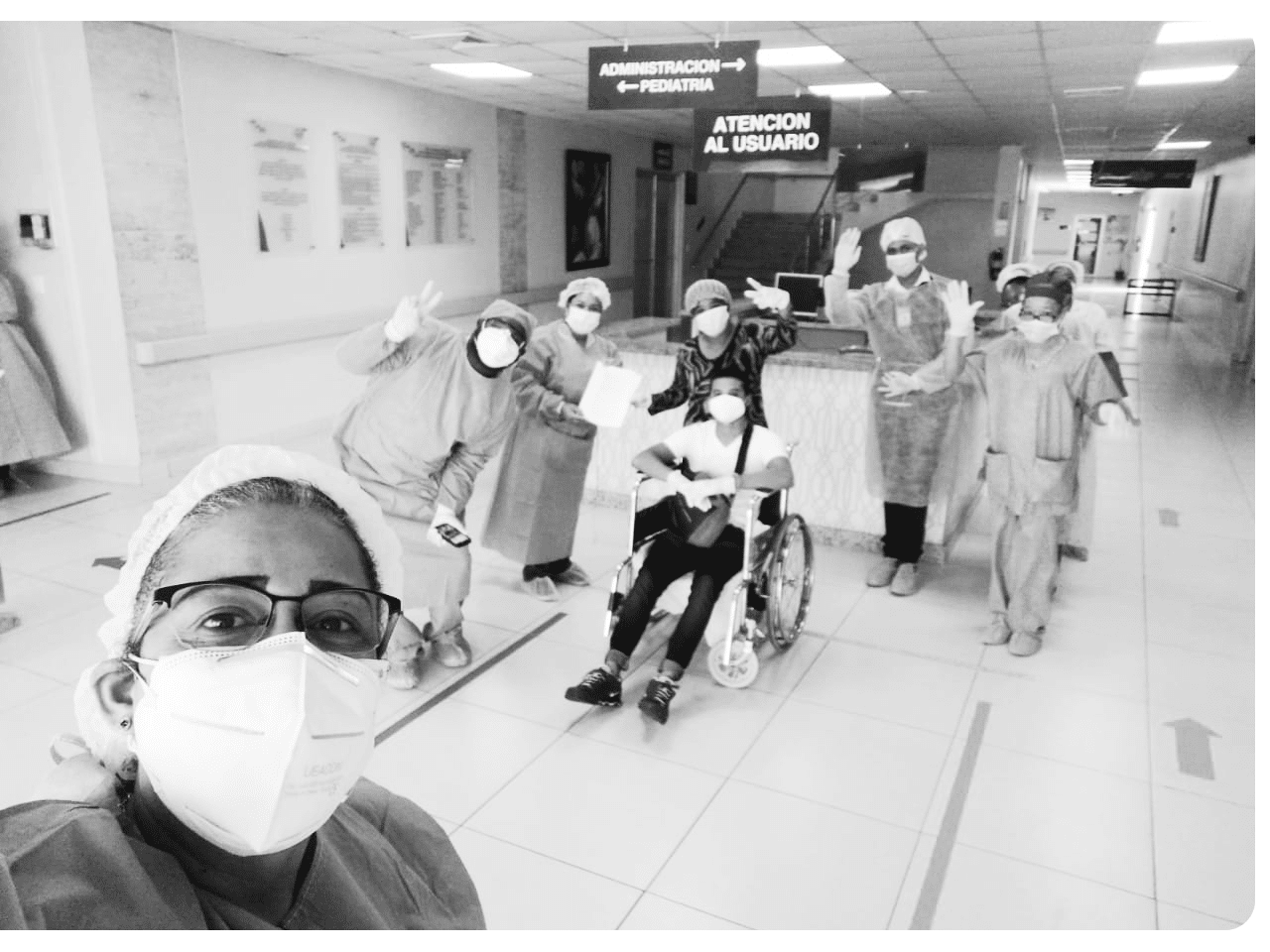
Protecting Health Care Workers
The first images from the pandemic are impossible to forget — especially those of heroic frontline health care workers who stepped up to fight the disease, often without the personal protective equipment they needed to protect their own health and safety.
Months before COVID-19 was declared a pandemic, Project HOPE was already delivering PPE to frontline health care workers around the world, starting at the epicenter of the disease in Wuhan, China. As the pandemic grew, so did our response: Soon, millions of masks, gloves, and surgical gowns were on their way to Colombia, Ecuador, India, Indonesia, Malawi, North Macedonia, and beyond. Project HOPE also partnered with members of the Business Roundtable and Healthcare Ready to deliver more than 2 million pieces of PPE to frontline health care workers in hard-hit U.S. cities like Boston, Chicago, and New York.
Thanks to your support, Project HOPE delivered more than 11 million pieces of PPE in 2020, providing protection — and peace of mind — to the doctors, nurses, and frontline personnel who worked tirelessly to keep the world safe.
READ MORE:
Photos: The Global Fight Against COVID-19
COVID-19 Will Undo Decades of Global Health Progress. But Not For Why You Think.
6 Health Triumphs We’re Thankful For This Year

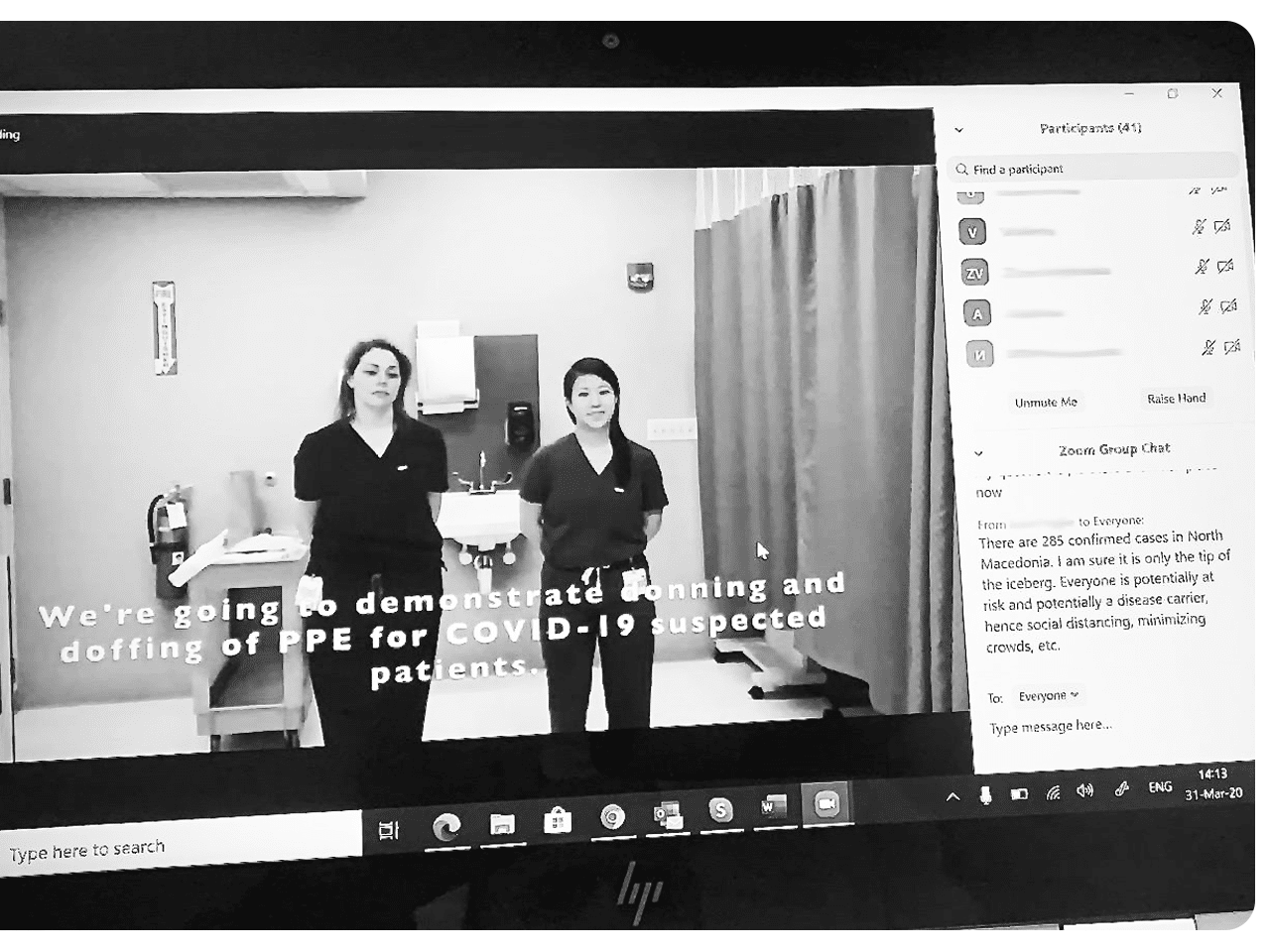
Delivering COVID-19 Trainings Worldwide
Equipping frontline health care workers doesn’t just mean protecting them physically; it also means providing the skills and knowledge they need to treat the patients in their care. The rapid spread of COVID-19 ignited a race to understand the disease, with health systems scrambling to learn how to diagnose and treat patients exhibiting symptoms.
Project HOPE stepped into the gap, partnering with the Center for Human Rights and Humanitarian Studies at the Watson Institute of Brown University to develop a world-class COVID-19 preparedness and response curriculum for high-risk countries. The trainings utilized a live, virtual, training-of-trainers approach that covered eight core modules of COVID-19 treatment.
The result? In 2020, more than 5,000 master trainers cascaded the trainings to 83,000 health care workers and frontline responders in over 50 countries worldwide.
READ MORE:
Is This the Future of Health Care Worker Training?
How Do You Train Over 100,000 Health Workers During A Pandemic?
The One Thing We Must Get Right Before the Next Pandemic

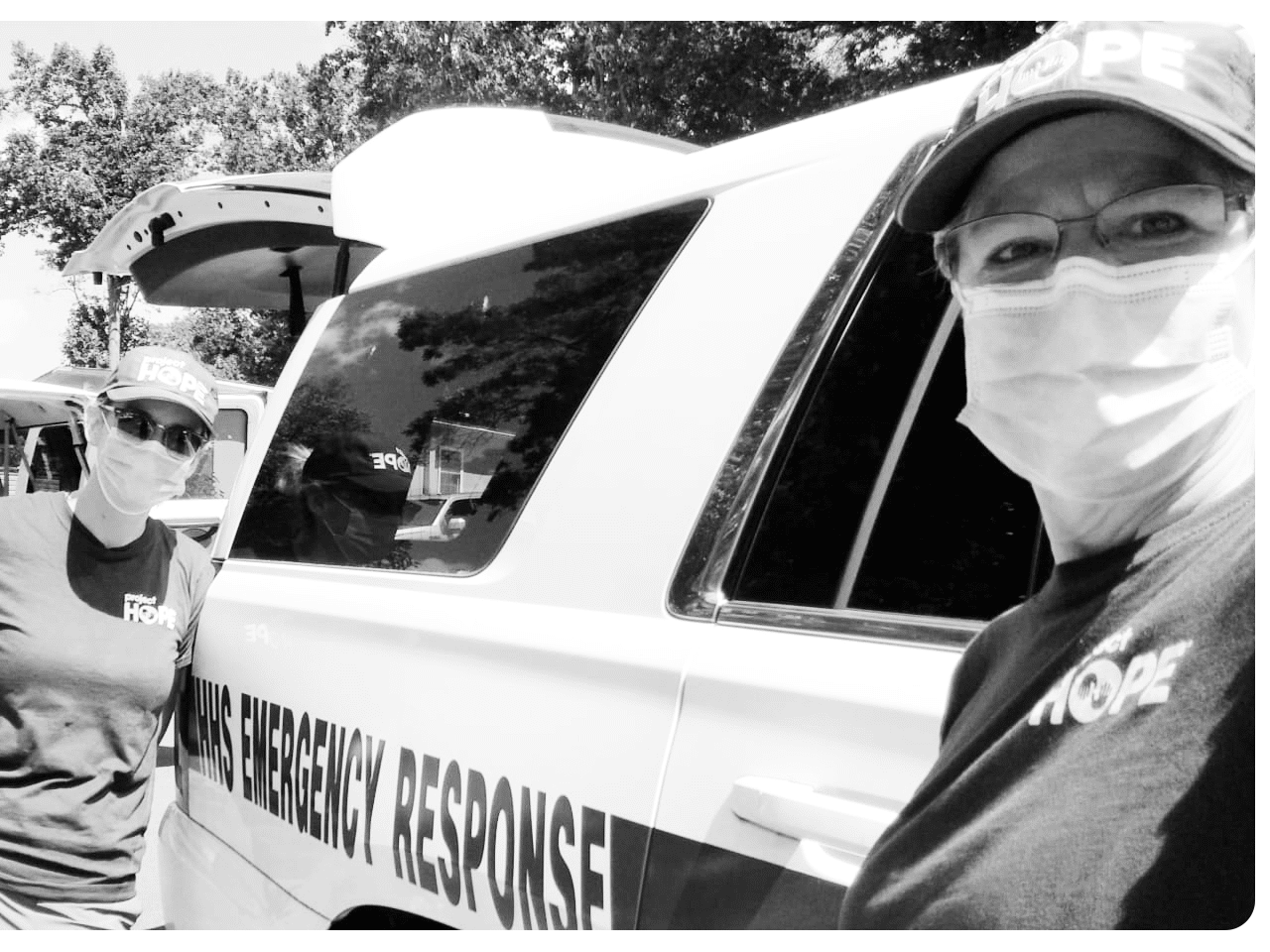
Going Where the Need Is Greatest
Medical volunteers have been at the heart of Project HOPE’s mission for more than 60 years. But never were they more needed than in 2020.
As health systems in the U.S. faced deadly surges of COVID-19, Project HOPE’s volunteers answered the call: providing surge staffing in emergency rooms, supporting long-term care facilities, caring for thousands of patients in ICUs, and distributing vaccines.
Throughout 2020, Project HOPE deployed volunteer medical teams to communities in the U.S. hit hard by COVID-19, including Illinois, Maryland, Texas and Navajo Nation. Some served multiple deployments, while others stayed in the field for weeks at a time. They are nurses and doctors, pediatricians and pharmacists. But they have one thing in common: a passion for bringing compassionate care to the front lines of today’s most urgent health challenges.
“This experience gave me something precious: respect,” says Lisa Bartleson, a nurse who spent six weeks in a critical COVID-19 ward in Navajo Nation. “Respect not only for the virus and the havoc it can wreak, but for the patients who were so extremely sick and so immeasurably alone, and who still found the will to fight and to smile.”
READ MORE:
Volunteer Voices: Quality Care Must Include Cultural Understanding
Volunteer Voices: Houston Strong
Volunteer Voices: The Unsung Heroes of the Pandemic

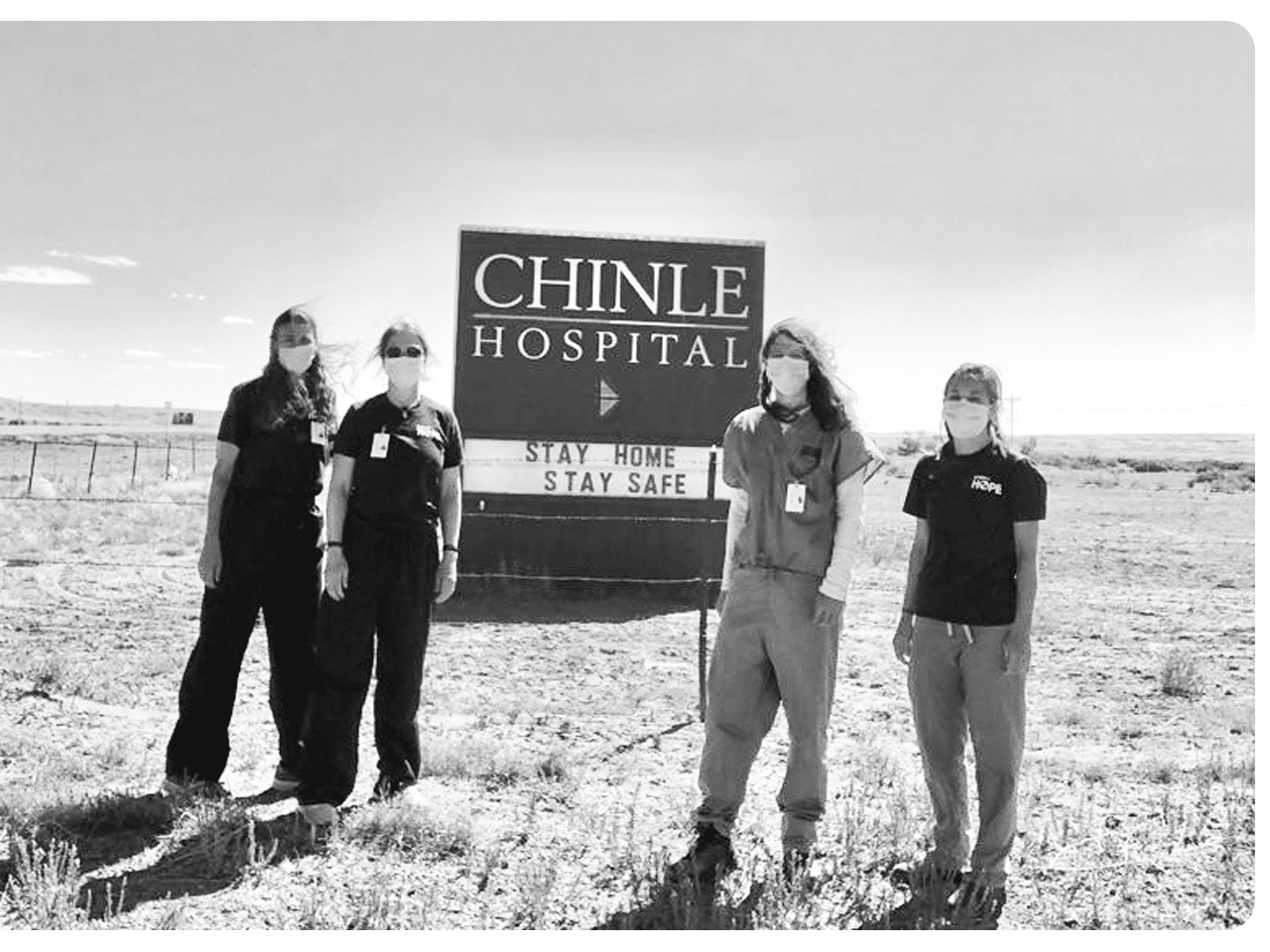
Supporting Navajo Nation
Indigenous communities, including American Indian populations, were among the most vulnerable groups impacted by COVID-19. In partnership with Indian Health Services, Project HOPE supported Navajo Nation throughout 2020 with PPE and ongoing deployments of medical volunteers to provide surge support in the reservation’s hospitals. Project HOPE volunteers totaled thousands of hours served in Navajo Nation, including vaccine distributions to help protect those who need it most.
“Working with the Chinle Hospital staff and the patients was an extremely positive cultural experience for me. I saw compassion and kindness — among each other, and among the volunteers working in the hospital. It heightened the desire in me to see all of America striving for a more connected, respectful society.”
READ MORE:
Volunteer Voices: What COVID’s Trauma Taught Me
Honoring the Volunteers at the Heart of Our Mission

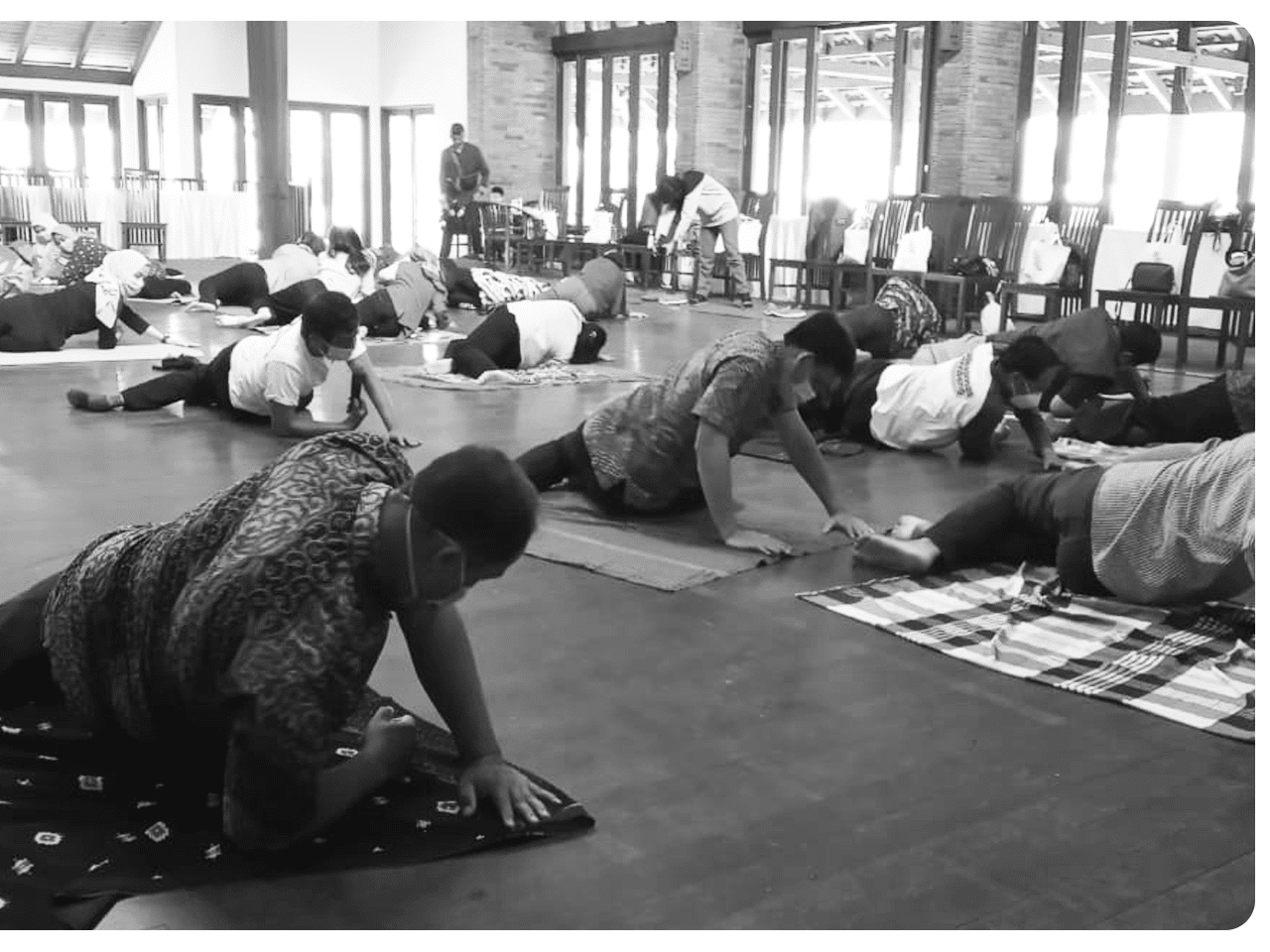
Guarding Frontline Workers’ Mental Health
More than half a million health care workers were infected with COVID-19 in 2020. But millions more faced a burden that was harder to diagnose: an extreme toll on their mental health, compounded by the increased dangers of their job and the risks they face day after day.
With support from the Abbott Fund, Project HOPE worked with local partners in Indonesia to pilot a new program to provide mental health and resiliency tools for health care workers. Held in-person and online, the trainings covered topics like stress, grief, trauma, and how to seek help — subjects many health care workers have never had the chance to discuss openly.
“Trainings like these can be a doorway to decrease stigmas and increase knowledge around mental health, which is the building block of mental health awareness and eventually better mental health service delivery,” says Rawan Hamadeh, Project HOPE’s associate project coordinator for mental health programming.
READ MORE:
COVID-19 Devastated New York’s Health Workers. Their Experience Is Helping Others Around The World.
In a Crisis, the Deepest Scars Can’t Be Seen
The Global Mental Health Crisis: 10 Numbers to Note

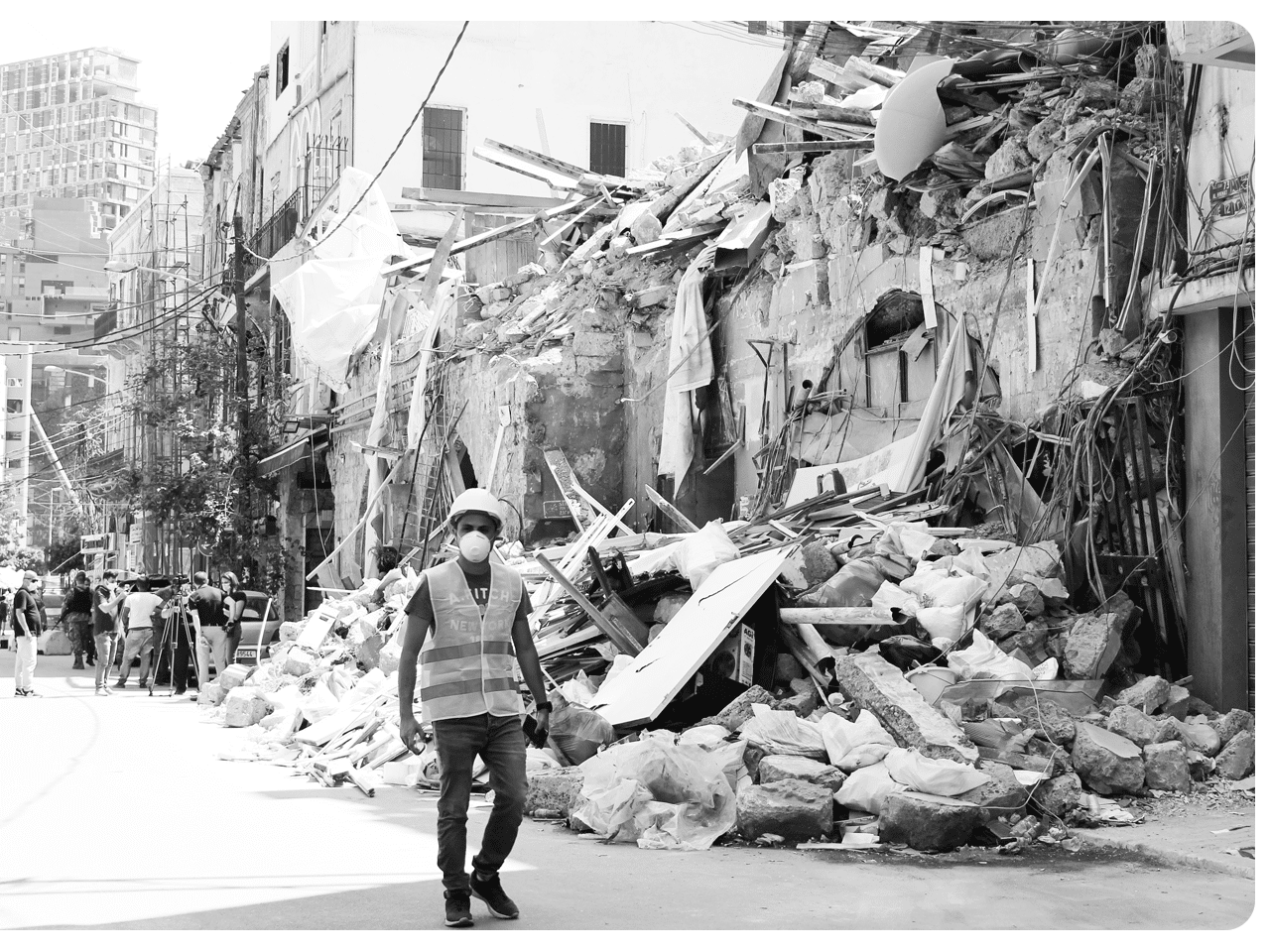
Providing Relief on the Ground in Beirut
Life changed in an instant in Beirut, Lebanon, when, with no warning, a massive explosion rocked the city on August 4. The Port of Beirut explosion left hundreds dead, thousands injured, and 300,000 people homeless — a devastating tragedy that damaged hospitals and medical facilities across the city.
Project HOPE was on the ground immediately, providing medicines, PPE, and medical and hygiene supplies to people in need. Project HOPE also helped provide support for reproductive and sexual health services, gender-based violence, and psychosocial support for vulnerable women and girls.
“We were in need of medical supplies, medicines, and first-aid kits because the area was drastically affected,” says Gilberte Nachar, the manager of a clinic assisted by Project HOPE in Beirut. “And out of nowhere, Project HOPE delivered 13 boxes to us full of medicine, which included first-aid supplies. We are in great need of those donations, especially for the patients who take medicine for long-term illnesses, and a lot of those medicines aren’t available to us. They came right in time, and we are so grateful for them.”
READ MORE:
In Beirut, One Moment Changed Life Forever
In a Crisis, the Deepest Scars Can’t Be Seen
Women Carry An Undue Mental Health Burden. They Shouldn’t Have To.

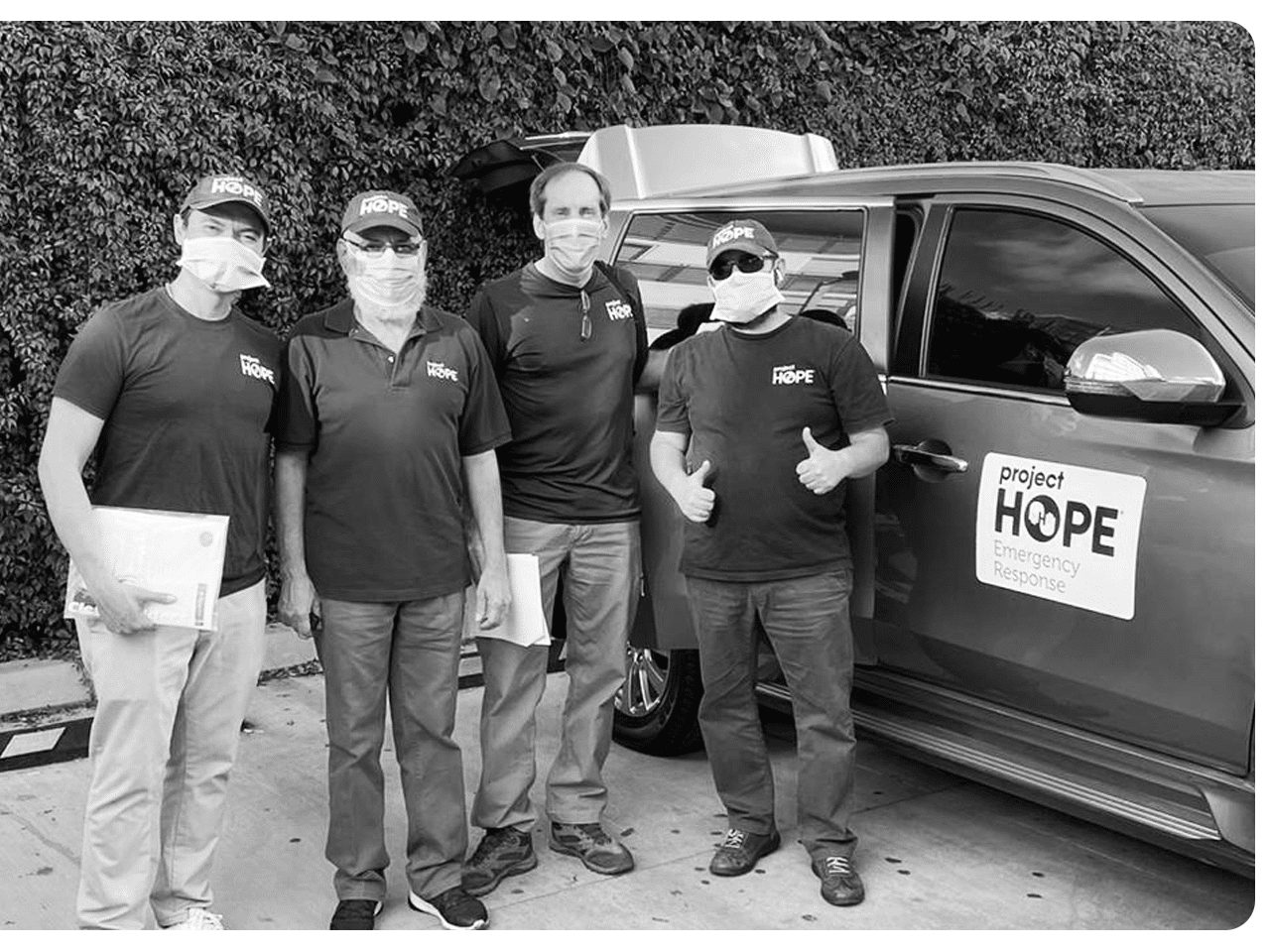
Responding When Every Second Counts
In addition to the Port of Beirut explosion, Project HOPE responded to health emergencies caused by Hurricane Eta, Hurricane Iota, Hurricane Laura, the Nagorno-Karabakh conflict, the war in Yemen, and a major earthquake in Puerto Rico. Project HOPE also launched its first regional Emergency Response Hub in Indonesia, utilizing local first responders to provide immediate assistance in the wake of disaster.
Even as COVID-19 stretched health systems to the brink, Project HOPE delivered the urgent relief that saved lives. Because health crises — and the frontline workers who respond to them — don’t stop during a pandemic.
In total, Project HOPE’s disaster response and humanitarian assistance activities reached more than 662,000 people in 2020.
- We trained 73,000 health care workers to better respond to emergencies and health crises
- We provided direct medical services to 160,000 people affected by natural disasters or humanitarian crises
- We reached 170,000 people with essential information about health, hygiene, and gender-based violence
- We deployed 103 expert medical volunteers to provide frontline support during disasters and humanitarian crises
- We delivered $6.1 million in essential equipment, medicines, and medical supplies related to emergency response
READ MORE:
6 Numbers That Underscore the Health Crisis in Yemen
Bracing for Storm Season in the Era of COVID-19
‘The Emergency Is Not Over’: A Q&A from the Epicenter of the Puerto Rico Earthquake

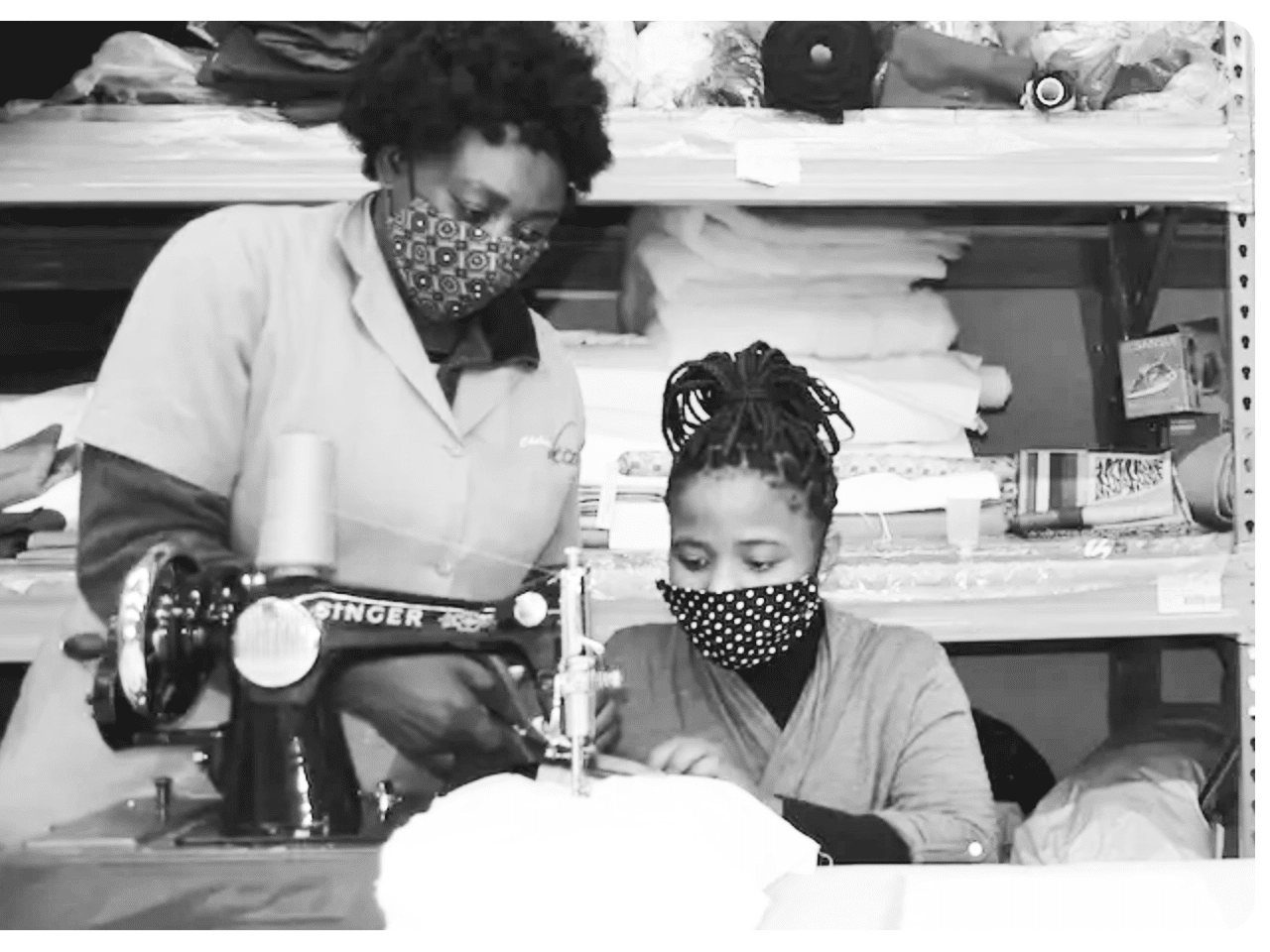
Ensuring Impact That Lasts
The pandemic affected every aspect of daily life in 2020, including Project HOPE’s global health programs around the world. From virtual meetings to new initiatives, our global health teams adapted, adjusted, and worked tirelessly to ensure that our life-changing work didn’t stop.
Mexico
Through the Young Health Program, Project HOPE is working with AstraZeneca to empower young people in Mexico with the knowledge and skills they need to live healthier lives. The lessons — many of which went virtual in 2020 — focus on tackling four of the biggest risk factors for noncommunicable diseases: unhealthy diets, lack of exercise, tobacco, and alcohol abuse. “The Young Health Program has helped me to raise my voice,” says Emiliano, 20. “You believed in me and encouraged me to be my best self. Now I believe in myself, too.”
Namibia
HIV disproportionately impacts young women in Namibia, with their incidence rates being several times higher than those for men. Project HOPE’s DREAMS program is helping to change that narrative, empowering young women to become more educated about the virus and teaching job skills that promote economic independence. When COVID-19 spread, girls in the DREAMS program saw the pandemic as an opportunity, launching their own tailoring business and selling masks to the local community. “I think it’s important for the community to know how to protect themselves from the coronavirus,” says Dorin, 18. “And wearing a face mask is one of the many ways we can protect ourselves.”
Dominican Republic
Even amid the pandemic, Project HOPE’s Saving the Newborn program continued to make a lifesaving difference for newborns in the Dominican Republic. Against the backdrop of pandemic restrictions and curfews, Project HOPE’s team worked around-the-clock to adapt programming and ensure progress continued. Together, they were able to improve health workers’ knowledge and skills in neonatal and obstetric care, upgrade critical NICU equipment, and strengthen data collection and reporting systems — work that is lowering the country’s neonatal mortality rates and giving more babies the chance for a healthy life.

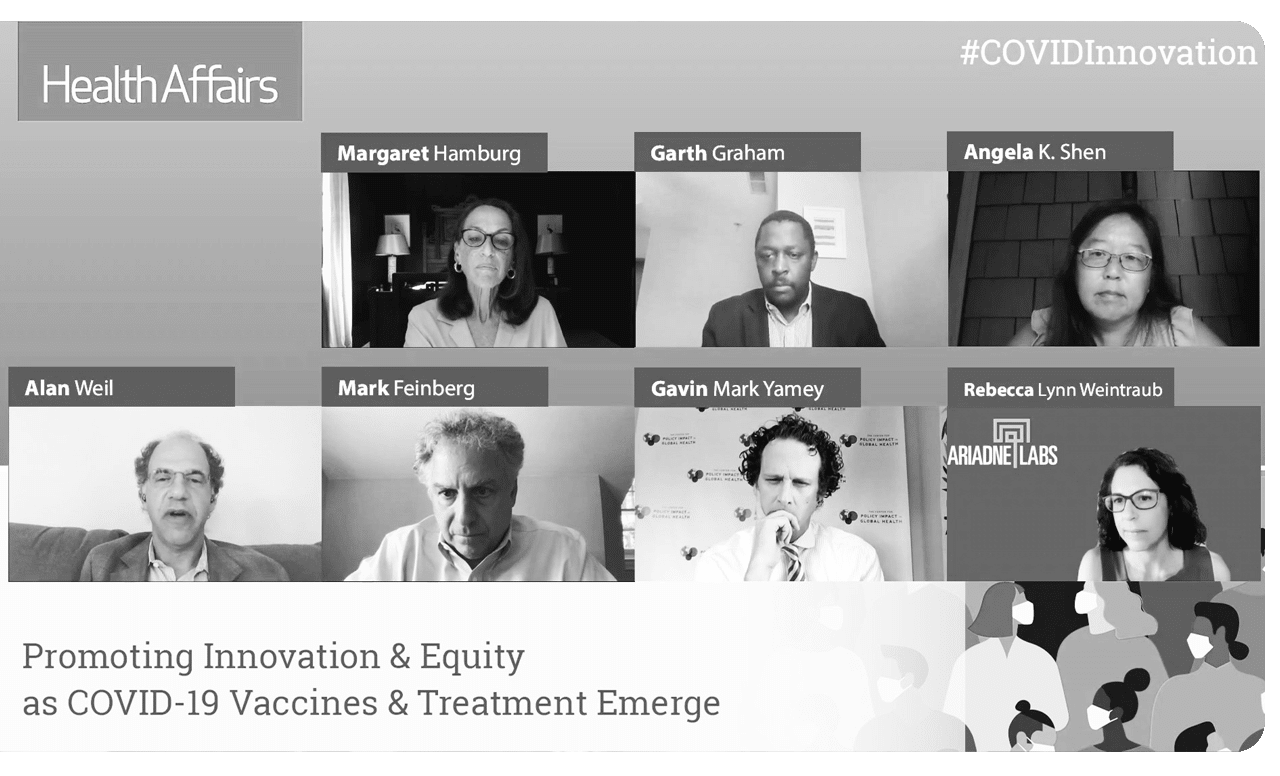
Health Affairs
In 2020, Health Affairs stepped up to provide critically important and time-sensitive evidence for policymakers addressing the COVID-19 pandemic worldwide. Health Affairs, published monthly by Project HOPE, is the leading peer-reviewed journal at the intersection of health, health care, and policy.
With the emergence of COVID-19, the journal developed a fast-track review and publication process, releasing early and important findings on measures such as mask wearing, social distancing, and vaccines and treatments. In addition, the Health Affairs Blog published 336 posts offering insights and analyses from leaders in the field regarding the fast-moving pandemic. All of this content was brought together in our accessible and well-utilized COVID-19 Resource Center.
Health Affairs Equity Initiative
In 2020, Health Affairs started building the foundation of a health equity initiative by appointing an equity project director, Vabren Watts, Ph.D. The goal of the initiative, launched in early 2021, was “to build a foundation for health services and health policy scholarly publishing that represents the perspectives of all cultures,” he says.
Other Accomplishments
In 2020, manuscript submissions to the journal and blog increased dramatically. There were four theme issues of the journal: “The Affordable Care Act Turns 10” (March); “Integrating Social Services And Health” (April); “Children’s Health” (October); and Health Affairs’ first-ever issue on “Climate & Health” (December). Additionally, Health Affairs published two clusters of articles in the “Culture of Health” series in February and July. The “Culture of Health” framework embraces the interconnected nature of health and social issues.
As a well-recognized nonpartisan convener, Health Affairs’ events during 2020 went virtual. Our eight events drew hundreds of online attendees from around the world. Health Affairs also launched two new podcasts: “A Health Podyssey“ and “Health Affairs This Week”; and published six Health Policy Briefs focusing on aspects of the Culture of Health.
Health Affairs’ efforts resulted in an impact factor of 5.331 among comparable peer-reviewed publications and more than 7.7 million new visitors to the website in 2020.

Our Commitment to Diversity, Equity, and Inclusion
Project HOPE strives to be a global workplace that is diverse, inclusive, and where people feel valued for their humanity — regardless of their race, ethnicity, age, gender expression, religion, sexual orientation, socioeconomic status, disability, or other identities.
In 2020, Project HOPE established a Diversity, Equity, and Inclusion Council to help guide our organization and integrate these principles in all our work. The council’s full recommendations will be published in 2021. But Project HOPE is already taking steps to commit to becoming a more diverse, equitable, and inclusive organization and mitigating all forms of systemic racism, inequity, prejudice, or implicit bias inside the organization.
We value all voices on our team, from every corner of the world, and are committed to putting these principles into action in order to become a better, more equitable organization.
READ MORE:
Project HOPE’s Commitment to Diversity, Equity, and Inclusion

Financial Summary
Project HOPE’s low overhead means more of your support goes to funding health projects around the world. Project HOPE has earned a reputation for financial integrity and efficiency. We take stewardship seriously, and we work to maximize the value of every contribution we receive.
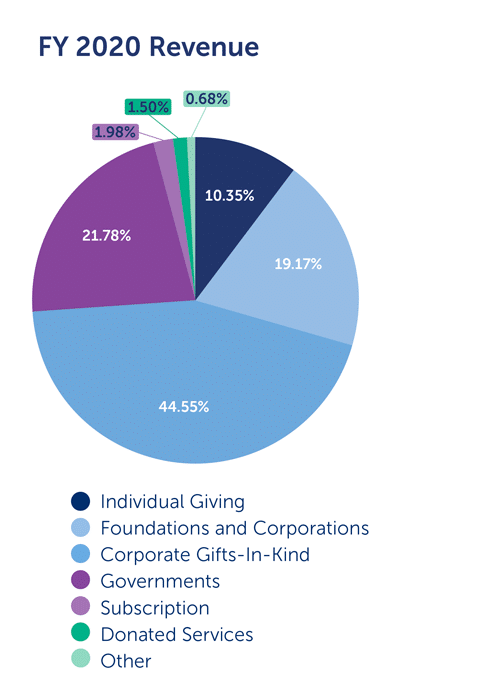
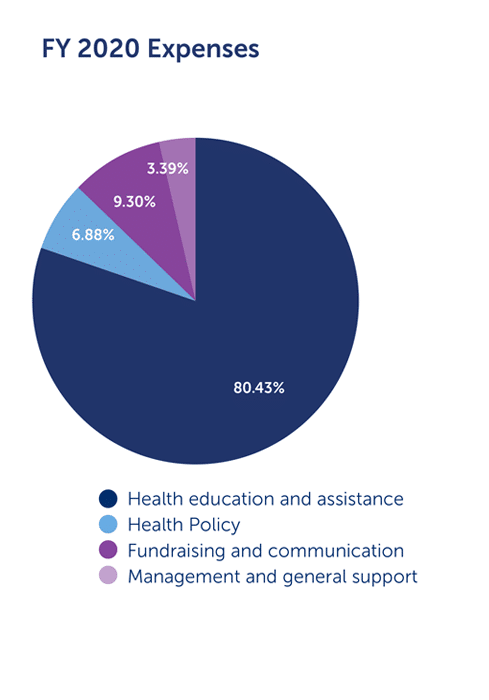
How you can help
Make a lifesaving gift to support our work now and for the future at projecthope.org/donateAre you a health-care or other professional who would like to learn more about volunteering abroad with Project HOPE? Learn more about our volunteer program and join our volunteer roster.
Stay up-to-date on this story and our lifesaving work around the world by following us on Facebook, Instagram, LinkedIn and Twitter, and help spread the word by sharing stories that move and inspire you.